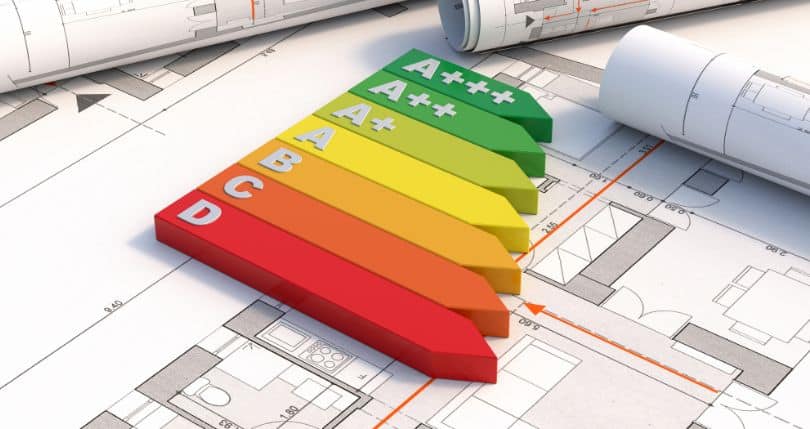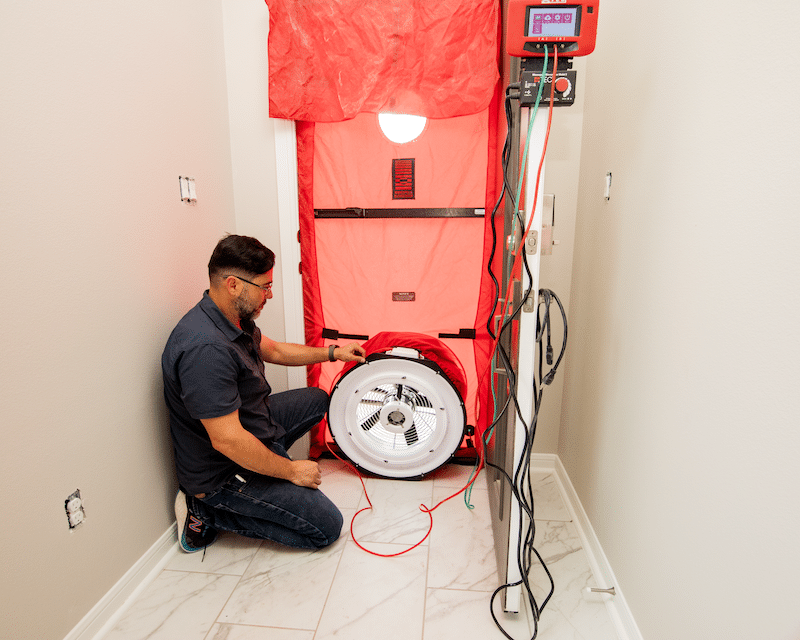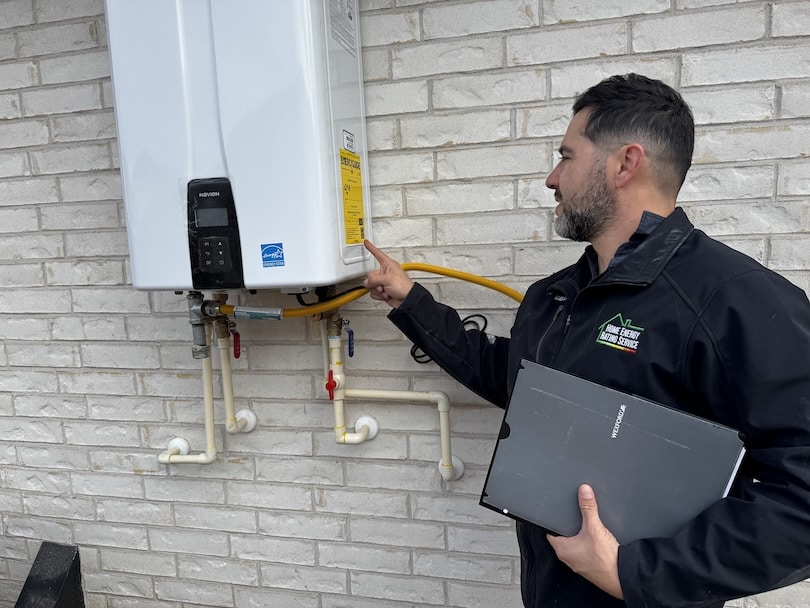Why Energy Ratings Matter When Buying a Home
A buyer’s guide to HERS scores, high-performance homes, and trusted programs like BUILT TO SAVE®, AEP Texas High-Performance Home Program, and ENERGY STAR®.
When you’re shopping for a new home, you probably focus on location, layout, price, and maybe even the size of the backyard. Most shoppers make buying decisions based on the home’s aesthetics: exotic granite countertops, beautiful flooring, designer lighting fixtures, and other features that have nothing to do with what every buyer should be more concerned about—the home’s performance. More important features are things like the home’s utilities costs, indoor air quality, durability, and resale value.
The best way to shop for a home is to look for one that is verified as a high-performance home. Why? Because a verified high-performance home is inspected during construction and tested after completion to confirm that the home meets the lowest energy ratings and other strict criteria for a more efficient, money saving, and comfortable living environment. Energy ratings give you a clear picture of how efficient a home is—and how much it could cost you to live in it month after month.
What Is an Energy Rating?
An energy rating measures how efficiently a home uses energy for heating, cooling, lighting, and other systems. It gives a clear picture of how efficient a home is—and how much it could cost you to live in it month after month. The most common rating used in new homes is the HERS® Index Score—short for Home Energy Rating System.
Think of the HERS Index like a miles-per-gallon sticker for your car, but for your home. In this case, however, the lower the score, the better. A typical home built to 2006 energy efficiency standards scores 100 on the HERS® Index. A home with a score of 70 is 30% more energy efficient. A home with a score of 50 is 50% more efficient—and so on. Lower HERS scores mean lower utility bills, better indoor comfort, and even higher resale value.
Why Energy Ratings Matter
Buying a home is one of the biggest investments you’ll ever make. An energy-efficient home can save you thousands of dollars over time in utility costs. But it’s not just about savings—energy ratings also tell you a lot about a home’s overall quality.
Homes with good energy ratings are built tighter, with better insulation, advanced HVAC systems, and tested air sealing. This means:
- Fewer drafts
- Better indoor air quality
- Longer-lasting equipment
- More consistent temperatures
And here’s the key: energy ratings aren’t based on guesswork. Licensed home energy raters test and inspect each home to make sure it meets high-performance standards.
See all BUILT TO SAVE® builders
Enjoy the peace of mind that your home was quality built.
Look for Verified High-Performance Homes
Not all homes are built the same. Some builders voluntarily go beyond basic building codes to construct high-performance homes that are verified by trusted programs. Here are three programs you should know about:
1. BUILT TO SAVE® Program
The BUILT TO SAVE® program is designed specifically for the South Texas region. It helps homebuyers find homes that are built better and save energy. Every home in the program must pass inspections and testing by an independent licensed home energy rater. These homes must meet strict energy efficiency standards that go beyond what minimum building code requires. Builders who verify their homes as BUILT TO SAVE® are eligible for cash rebates from Magic Valley Electric Cooperative for homes built in MVEC territory.
When you see the BUILT TO SAVE® certification, you can be confident the home is built to perform—offering better comfort, lower energy bills, and greater durability.
2. AEP Texas High-Performance Home Program
AEP Texas offers a High-Performance Home Program that encourages builders to construct homes that use less electricity. Builders in this program work with certified energy raters to ensure each home meets efficiency standards. Homes in this program have lower HERS scores, energy-saving equipment, and upgrades that improve air quality and comfort. AEP Texas provides incentives for builders who complete the requirements of its program for homes in the communities it serves.
3. ENERGY STAR® Certified Homes
ENERGY STAR® is a national program backed by the U.S. Environmental Protection Agency (EPA). An ENERGY STAR® certified home is at least 10% more energy efficient than a standard new home—and often much more. Like the other programs, ENERGY STAR® homes must pass inspections and testing by certified raters.
These homes include high-efficiency HVAC systems, advanced insulation, and windows that reduce heat gain. ENERGY STAR® is a trusted label that homebuyers nationwide recognize for quality and energy savings. Builders of ENERGY STAR® verified homes qualify for federal tax credits.
Final Thoughts
Before you buy your next home, ask the builder or seller for the HERS Index Score and whether the home is certified by BUILT TO SAVE®, AEP Texas High-Performance Home Program, or ENERGY STAR®. These ratings and certifications give you confidence that your home is not only beautiful, but built to a higher standard of energy efficiency and comfort.
Remember: a home that costs less to operate, feels better to live in, and holds its value longer is always a smarter buy!
Visit www.BuiltToSave.org to find out more about why you should not settle for a minimum code-built home when you can enjoy the savings and comfort of a high-performance home. You can also find builders enrolled in the BUILT TO SAVE® program offering high-performance homes.
© RGV New Homes Guide, 2025. Unauthorized use and/or duplication of this material without express and written permission from this site’s author and/or owner is strictly prohibited. Excerpts and links may be used, provided that full and clear credit is given to RGV New Homes Guide with appropriate and specific direction to the original content.








